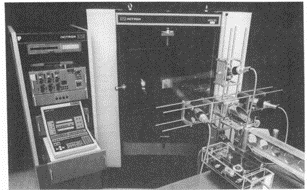Fracture Mechanics and Finite Element Analysis: Catastrophic to Damage Tolerance (NASGRO)

Analysis
Welcome to our overview of Predictive Engineering’s FEA consulting services in Fracture Mechanics and Damage Tolerance. We are realists in the world of virtual simulation. That is, we are mechanically focused and come from experimental and laboratory backgrounds and we use this reality to guide us in the virtual world where it can be quite difficult to determine whether one has a cartoon or something real.
Our fracture mechanics experience has been gained in the laboratory, academically and in-the-field. We have seen first-hand how structures can catastrophically fail and how careful analysis work can lead to long-term, safe operation.
This brief note takes the reader from our origins at the Idaho National Engineering Laboratory (INEL), to our experience in mining and mineral commutation, to XFEM of aluminum ship structures, ASME Division 2, Section 3, Alternative Rules for High Pressure Vessels to finally our experience with NASGRO in the analysis of Composite Overlay Pressure Vessels (COPV).
We hope you enjoy this tour of our FEA consultants experience in Fracture and Damage Mechanics.
PDF Download
Fracture Mechanics and Finite Element Analysis: Catastrophic to Damage Tolerance (NASGRO)
Fracture and fatigue mechanics is a core wheelhouse activity at Predictive Engineering. Our FEA consultants have years of laboratory and real-world experience in solving industry specific fracture and fatigue problems. We have done projects from naval vessels to submarines to satellites where understanding how laboratory data is applied to as-built structures was the key to the projects’ success. We do not get lost in the math, whether Griffith-Irwin or XFEM, but keep it relevant that for a crack to grow, one needs a tensile stress field (Mode I) and never forget the role of environmentally induced stress corrosion cracking.
Why do materials fail and how can we predict how fast they can fail? Fracture is the pulling apart of the material and that only occurs under tension. Many engineers have this false impression that materials don’t fail under compression load, but they do since all materials contain defects! At the poles of these voids and defects, tensile stresses develop under compressive load. This is how rocks are crushed, materials wear and structures blow apart.
ASME Section VIII, Division 3 Alternative Rules for High-Pressure Vessels calls out Methods API 579-1 and ASME FFS-1 (Fit-For-Service) as procedures for calculating the low-cycle fatigue lives of metallic structures. Historically, Predictive Engineering has done such work via spreadsheets and MathCAD, nowadays, we have NASGRO, which more or less automates, the procedure. Our goal as FEA BPVC consultants is to ensure that our vessels don’t blow their tops!
Composite Overlay Pressure Vessels (COPV) Type 3 use an aluminum or steel liner. One of the advantages of using a metallic liner is the option to apply an autofrettage treatment to create a compressive stress in the liner. Autofrettage greatly enhances the damage tolerance of the liner during operation. In the analysis of COPV Type 3 and Type 4 cylinders for aerospace applications, the analysis is completely nonlinear from autofrettage to burst prediction. At operational levels, FEA stress numbers are used in the NASGRO damage tolerance calculations.
